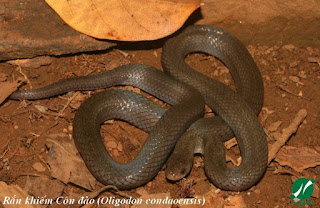[Most Recent Entries] [Calendar View]
Wednesday, October 5th, 2022
| Time | Event | ||||
| 8:54a | [Paleontology • 2022] Lunataspis borealis • A New Species of the Ordovician (Late Sandbian) Horseshoe Crab Lunataspis from Kingston, Ontario, Canada
Abstract Horseshoe crabs as a group are renowned for their morphological conservatism punctuated by marked shifts in morphology associated with the occupation of non-marine environments and have been suggested to exhibit a consistent developmental trajectory throughout their evolutionary history. Here, we report a new species of horseshoe crab from the Ordovician (Late Sandbian) of Kingston, Ontario, Canada, from juvenile and adult material. This new species provides critical insight into the ontogeny and morphology of the earliest horseshoe crabs, indicating that at least some Palaeozoic forms had freely articulating tergites anterior to the fused thoracetron and an opisthosoma comprising 13 segments. Keywords: Xiphosura, Lunataspis borealis, development, ontogeny, Sandbian Systematic palaeontology Chelicerata Heymons, Reference Heymons, 1901 Xiphosura Latreille, Reference Latreille, 1802 Xiphosurida Latreille, Reference Latreille, 1802 Lunataspis Rudkin, Young and Nowlan, Reference Rudkin, Young and Nowlan, 2008 Lunataspis borealis sp. nov. Holotype. ROM IP 64616 (Fig. 1a, d), complete adult specimen in dorsal view preserving the dorsal prosomal carapace, thoracetron, postabdomen and telson. Localities and horizon. Upper Member of the Gull River Formation, Simcoe Group, Upper Ordovician (Late Sandbian), in Kingston, Ontario, Canada (44° 15′ 52.7″ N, 76° 29′ 46.3″ W). Diagnosis. Lunataspis with cardiac node positioned at base of cardiac lobe; lateral eyes located along middle of prosomal carapace length. Etymology. The species name borealis is Latin for ‘northern’ and refers to the northerly latitude from which the species is known. James C. Lamsdell, Phillip A. Isotalo, David M. Rudkin and Markus J. Martin. 2022. A New Species of the Ordovician Horseshoe Crab Lunataspis. Geological Magazine. First View, 1-5. DOI: 10.1017/S0016756822000875 | ||||
| 1:58p | [Herpetology • 2016] Oligodon condaoensis • A New Species of Kukri Snake Genus Oligodon Fitzinger, 1826 (Serpentes: Colubridae) from Con Dao Islands, southern Vietnam
We describe a new kukri snake, Oligodon condaoensis sp. nov., from Con Dao Islands, southern Vietnam based on the morphological characters of four specimens. It differs from other congeners by a combination of the following characters: medium size in adults (total length up to 552 mm); 17–17–15 dorsal scale rows; deeply forked hemipenes without spines and papillae, extending to subcaudal 13 or 14; 11–13 maxillary teeth, the posterior three being enlarged; cloacal plate undivided; head scalation complete; nasal divided; presubocular absent; 168–176 ventrals; 33–37 subcaudals; overall dorsal coloration dark gray, faint body stripes present or absent; and ventral coloration cream to dark gray without rectangular blotches. We also provide a list of 43 species of amphibians and terrestrial reptiles recorded from Con Dao Islands. Keywords: Reptilia, Hon Ba, hemipenis, Indochina, maxillary teeth, Oligodon condaoensis sp. nov.
Oligodon condaoensis sp. nov. Diagnosis. Oligodon condaoensis sp. nov. is distinguished from all of its congeners by a combination of the following morphological characters: (1) medium size in adults (total length up to 552 mm); (2) dorsal scale rows 17–17–15; (3) deeply forked hemipenes without papillae and spines, extending to SC 13 or 14; (4) maxillary teeth 11–13, the posterior three being enlarged; (5) cloacal plate undivided; (6) head scalation complete; (7) nasal divided; (8) presubocular absent; (9) ventrals 168–176; (10) subcaudals 33–37; (11) overall dorsal coloration dark gray, faint body stripes present or absent; (12) venter cream to dark gray without rectangular blotches. Distribution. The new species is currently known only from Hon Ba Island, Con Dao District, Ba Ria–Vung Tau Prov., Vietnam. Etymology. The specific epithet condaoensis is derived from Con Dao Islands, where the new species was discovered. Sang N. Nguyen, Vu D. H. Nguyen, Son H. Le and Robert W. Murphy. 2016. A New Species of Kukri Snake (Squamata: Colubridae: Oligodon Fitzinger, 1826) from Con Dao Islands, southern Vietnam. 4139(2); 261–273. DOI: 10.11646/zootaxa.4139.2.9 http://www.condaopark.com.vn/vnt_upload/n |
| << Previous Day |
2022/10/05 [Calendar] |
Next Day >> |



